Tag: #otd
26 March 1941 – today in history…
by Volker on Mar.26, 2024, under Allgemein
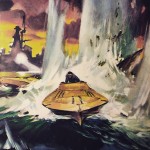 During the winter of 1940-1941 the human torpedo attacks were suspended, at least until the following spring. A detachment of MT explosive boats was based in the Dodecanese, where it trained under the command of Vittorio Moccagatta on the island of Leros with the objective of attacking Souda Bay and the British traffic to Greece.
During the winter of 1940-1941 the human torpedo attacks were suspended, at least until the following spring. A detachment of MT explosive boats was based in the Dodecanese, where it trained under the command of Vittorio Moccagatta on the island of Leros with the objective of attacking Souda Bay and the British traffic to Greece.
Vittorio Moccagatta was ordered back to Italy on 23 January 1941, where he became the commander of the 1st MAS Flotilla in La Spezia. His suggestions to the Italian naval commando assumed in the result that the 1st MAS Flotilla became the 10th MAS Flotilla – the Decima MAS – on 15 March 1941, which was divided into two divisions from that time:
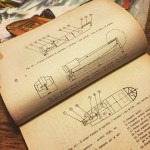 The surface division – Mezzi di Superficie – under the command of Capitano di Corvetta Giorgio Giobbe with a fleet of various explosive boats (category MT, MTM shown by the historic sketches on the left, MTR, MTS, MTMS, SMA, MTL) and motorboats for sabotage operations.
The surface division – Mezzi di Superficie – under the command of Capitano di Corvetta Giorgio Giobbe with a fleet of various explosive boats (category MT, MTM shown by the historic sketches on the left, MTR, MTS, MTMS, SMA, MTL) and motorboats for sabotage operations.
The underwater division – Mezzi Subacquei – under the command of Capitano di Corvetta Junio Valerio Borghese operated the diving School in Livorno, the SLC training base at Bocca di Serchio, the remaining transport submersibles Scirè and Ambra and the frogmen of the “Gruppo Gamma”. On a side note, in early 1941, the two initial transport submersibles for SLC devices, Iride and Gondar, were already lost with the failure of „Operazione G.A.1“ and „Operazione G.A.2“ in August and September 1940.
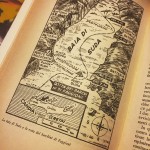 On 26 March 1941, the surface division – Mezzi di Superficie – of the Decima MAS achieved initial successes: six MT-type explosive boats broke through the blockades in Souda Bay (Crete, see historic map on the left) damaging the heavy cruiser York and the tanker Pericles.
On 26 March 1941, the surface division – Mezzi di Superficie – of the Decima MAS achieved initial successes: six MT-type explosive boats broke through the blockades in Souda Bay (Crete, see historic map on the left) damaging the heavy cruiser York and the tanker Pericles.
During the night, the servicemen Luigi Faggioni (commander), Angelo Cabrini, Tullio Tedeschi, Alessio De Vito, Lino Beccati and Emilio Barberi) were transported to the target area aboard the destroyers Crispi and Sella. These two destroyers were equipped with electrically powered cranes for placement of the MT-type explosive boats on the water, which was carried out in just a few minutes, ten miles from Souda’s entrance, at 2330 hours on 25 March 1941. Unnoticed by the enemy, the MT-type explosive boats managed to cross three barricades and reached their targets in the early hours of the morning of 26 March 1941.
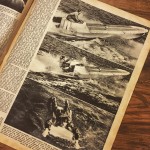 Two MT-type explosive boats attacked the York (the pilots abandoned their boats 80 meters before hitting the ship, see historic photos on the left). Another two MT-type explosive boats attacked the Pericles. Commander Faggioni tried to hit the Coventry but his boat missed the cruiser and exploded on the coast. The sixth MT-type explosive boat missed its target too, but remained intact and was captured by the British. All six pilots of the explosive boats survived the attack and became POW.
Two MT-type explosive boats attacked the York (the pilots abandoned their boats 80 meters before hitting the ship, see historic photos on the left). Another two MT-type explosive boats attacked the Pericles. Commander Faggioni tried to hit the Coventry but his boat missed the cruiser and exploded on the coast. The sixth MT-type explosive boat missed its target too, but remained intact and was captured by the British. All six pilots of the explosive boats survived the attack and became POW.
Read more about the timeline of the missions during the Second World War in chapter II.I on page 106-146. Vittorio Moccagatta is featured on page 112-113, the attack in Souda Bay is featured on page 108-109.
18 December 1941 – today in history…
by Volker on Dec.18, 2023, under Allgemein
After the failed missions in August and September 1940, the Decima MAS returned to the eastern Mediterranean in order to make another attemp to attack the Harbour of Alexandria with SLC devices of the Mezzi d’Assalto: “Operazione G.A.3”, carried out by Tenente di Vascello Luigi Durand de la Penne and Capo Palombaro I Emilio Bianchi (SLC 221), Capitano Genio Navale Antonio Marceglia and Sottocapo Palombaro Spartaco Schergat (SLC 222), Capitano Armi Navale Vincenzo Martellotta and Sottocapo Palombaro Mario Marino (SLC 223).
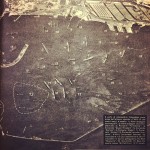 What turned out to be one of the most famous SLC missions in the Second World War has been announced in the Italian War Bulletin N. 585 of the 8th of January 1942: “On the night of the 18th December assault craft of the Italian Royal Navy entered the Harbour of Alexandria and attacked two British battleships anchored there. It has only just been confirmed that a battleship of the Valiant class was seriously damaged and put into dock for repairs, and is still there.”
What turned out to be one of the most famous SLC missions in the Second World War has been announced in the Italian War Bulletin N. 585 of the 8th of January 1942: “On the night of the 18th December assault craft of the Italian Royal Navy entered the Harbour of Alexandria and attacked two British battleships anchored there. It has only just been confirmed that a battleship of the Valiant class was seriously damaged and put into dock for repairs, and is still there.”
Bulletin N. 586 of the 9th of January 1942, added the following: “In the Operation conducted by assault craft fo the Royal Italian Navy in the Harbour of Alexandria and reported in yesterday’s Bulletin we now have definite further intelligence that, in Addition to the Valiant, a second battleship of the Barham class was also damaged.”
 Winston Churchill announced in a speech before a secret session of the House of Commons on the 23rd of April 1942: “A further sinister stroke was to come. On the early morning of December 19 half a dozen Italians in unusual diving suits were captured floundering about in the Harbour of Alexandria… Four hours later explosions occurred in the bottoms of the Valiant and the Queen Elizabeth, produced by limpet bombs fixed with extra-ordinary courage and ingenuity, the effect which was to blow large holes in the bottoms of both ships and to flood several compartments, thus putting them both out of Actions for many months…”
Winston Churchill announced in a speech before a secret session of the House of Commons on the 23rd of April 1942: “A further sinister stroke was to come. On the early morning of December 19 half a dozen Italians in unusual diving suits were captured floundering about in the Harbour of Alexandria… Four hours later explosions occurred in the bottoms of the Valiant and the Queen Elizabeth, produced by limpet bombs fixed with extra-ordinary courage and ingenuity, the effect which was to blow large holes in the bottoms of both ships and to flood several compartments, thus putting them both out of Actions for many months…”
Read chapter II.I of our book “The References” 1930’s-1940’s to find out what happened on 18 December 1941 (page 118-125). More on the historic content in our “The References” book set with a total of 1392 pages can be found here and here. You can purchase “The References” 1930’s-1940’s in our bookstore. Enjoy reading!
18 November 1944 – today in history…
by Volker on Nov.18, 2023, under Allgemein
 Read chapter VII of our book “History2” to find out what happened on 18 November 1944. Rare documents helped us to capture the history behind a Ref. 3646 / Type D “Kampfschwimmer” watch, which can be found in this chapter.
Read chapter VII of our book “History2” to find out what happened on 18 November 1944. Rare documents helped us to capture the history behind a Ref. 3646 / Type D “Kampfschwimmer” watch, which can be found in this chapter.
Beside photos from the years 1944 and 1945 showing the watch on the frogman’s wrist, as well as his identification papers and travel documents issued in Venice (see photo), helped us to reconstruct the route Hanns-Martin Kaufhold took to the mission grounds in the last months of the Second World War.
Read more about chapter VII of “History2” (70 pages, 58 photos, 6 technical illustrations) here. and here. You can purchase your copy of “History2” in our bookstore.
30 October 1940 – today in history…
by Volker on Oct.30, 2023, under Allgemein
1940. The first mission against the Port of Gibraltar (B.G.1) was aborted when it became clear that the British fleet had already left for Operation “Menace”. The transport submersible Scirè under the command of Junio Valerio Borghese was still 50 nautical miles off Gibraltar. Disappointed, the SLC teams returned to their secret base at Bocca di Serchio, where they intensively discussed the feasibility of this type of attack. This happened at the same time when „Operazione G.A.2“ was about to end with the sinking of the transport submersible Gondar.
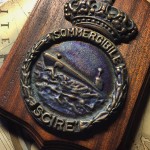 Initial, decisive proof of the feasibility and the successful, secret penetration of enemy ports was achieved by Comandante Borghese and his men in mission B.G.2. Again, three SLCs were dispatched: Teseo Tesei with Alcide Pedretti, Luigi Durand de la Penne with Emilio Bianchi and Gino Birindelli with Damos Paccagnini.
Initial, decisive proof of the feasibility and the successful, secret penetration of enemy ports was achieved by Comandante Borghese and his men in mission B.G.2. Again, three SLCs were dispatched: Teseo Tesei with Alcide Pedretti, Luigi Durand de la Penne with Emilio Bianchi and Gino Birindelli with Damos Paccagnini.
The Scirè came into position at around 1.30 a.m. on 30 October 1940 in order to allow the SLC teams to disembark from the conning tower of the submersible. The Scirè only remained at the surface for a short time so that the three SLC teams could reach the cylindrical pods on the deck of the submersible. The Scirè then retreated back beneath the surface. Under water, the three teams manoeuvred their SLCs out from the pods and started their attack on the Port of Gibraltar. The three teams experienced problems almost as soon as the attack began. While Tesei and his co-pilot Pedretti had problems with their breathing apparatus, Durand de la Penne and his co-pilot Bianchi experienced problems with their electric engine. Both teams decided to abort the attack and sink their SLCs. However, only De la Penne managed to do this. Tesei’s SLC was washed up on the Spanish coast near La Linea and caused quite a stir among both the Spanish authorities and the British secret service. Both teams swam to the Spanish coast and were able to return safely to Italy with the help of the Italian secret service.
 The fate of the entire operation now lay in the hands of Gino Birindelli and his co-pilot Damos Paccagnini. Unaware of the fact that their comrades-in-arms had already had to terminate their mission, they launched their attack on the Port of Gibraltar. Although mission B.G.2 was in principle a failure because not one enemy ship was sunk, Birindelli and his co-pilot Paccagnini were able to prove for the first time that a “maiale” was able to enter an enemy port unnoticed.
The fate of the entire operation now lay in the hands of Gino Birindelli and his co-pilot Damos Paccagnini. Unaware of the fact that their comrades-in-arms had already had to terminate their mission, they launched their attack on the Port of Gibraltar. Although mission B.G.2 was in principle a failure because not one enemy ship was sunk, Birindelli and his co-pilot Paccagnini were able to prove for the first time that a “maiale” was able to enter an enemy port unnoticed.
„Operazione B.G.2“ marked the start of a three year war that took place noiselessly and under water in the Bay of Gibraltar. For Gino Birindelli, however, the mission marked the start of a journey through Allied POW camps that would last many months. Read more on mission B.G.2 and the story of Gino Birindelli in our book “The References” 1950’s-1960’s in chapter VIII.II on page 1014-1043.
26 May 1941 – today in history…
by Volker on May.26, 2019, under Allgemein
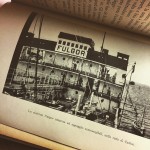 In May 1941, the Decima MAS continued its attacks on the Port of Gibraltar. This time, the SLC pilots’ energy was preserved because they were flown over to Spain disguised as crew members and shipping company employees so that they wouldn’t have to go through the lengthy approach by submarine. Once they had arrived in Spain, they travelled overground to the Port of Cádiz, where the Italian tanker Fulgor had been detained since Italy joined the war.
In May 1941, the Decima MAS continued its attacks on the Port of Gibraltar. This time, the SLC pilots’ energy was preserved because they were flown over to Spain disguised as crew members and shipping company employees so that they wouldn’t have to go through the lengthy approach by submarine. Once they had arrived in Spain, they travelled overground to the Port of Cádiz, where the Italian tanker Fulgor had been detained since Italy joined the war.
On 15 May 1941, the transport submarine Scirè left the Port of La Spezia with the “maiali” on board, but without their pilots. After passing the Strait of Gibraltar on 22/23 May, Borghese reached the Port of Cádiz and overnight took on board the six SLC pilots who had previously been on the Fulgor: Decio Catalano and Giovanni Giannoni, Amedeo Vesco and Amelio Franchi (replaced by reserve Antonio Marceglia), Licio Visintini and Giovanni Magro.
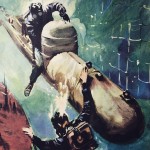 Despite the successful deployment of the three SLCs on 26 May 1941, the B.G.3 mission failed due to technical problems and a good deal of bad luck in the last phase of the attack when an explosive charge that had been successfully attached to the hull of a ship became detached at the last second. All six SLC pilots reached the Spanish coast and were able to return to their base at Bocca di Serchio with the aid of the Italian Consul in Algeciras.
Despite the successful deployment of the three SLCs on 26 May 1941, the B.G.3 mission failed due to technical problems and a good deal of bad luck in the last phase of the attack when an explosive charge that had been successfully attached to the hull of a ship became detached at the last second. All six SLC pilots reached the Spanish coast and were able to return to their base at Bocca di Serchio with the aid of the Italian Consul in Algeciras.
However, the mission B.G.3 still had some positive aspects: The British did not notice the operation and the element of surprise was not wasted. The use of the tanker Fulgor as a forward base on Spanish territory proved extremely useful and effective.





